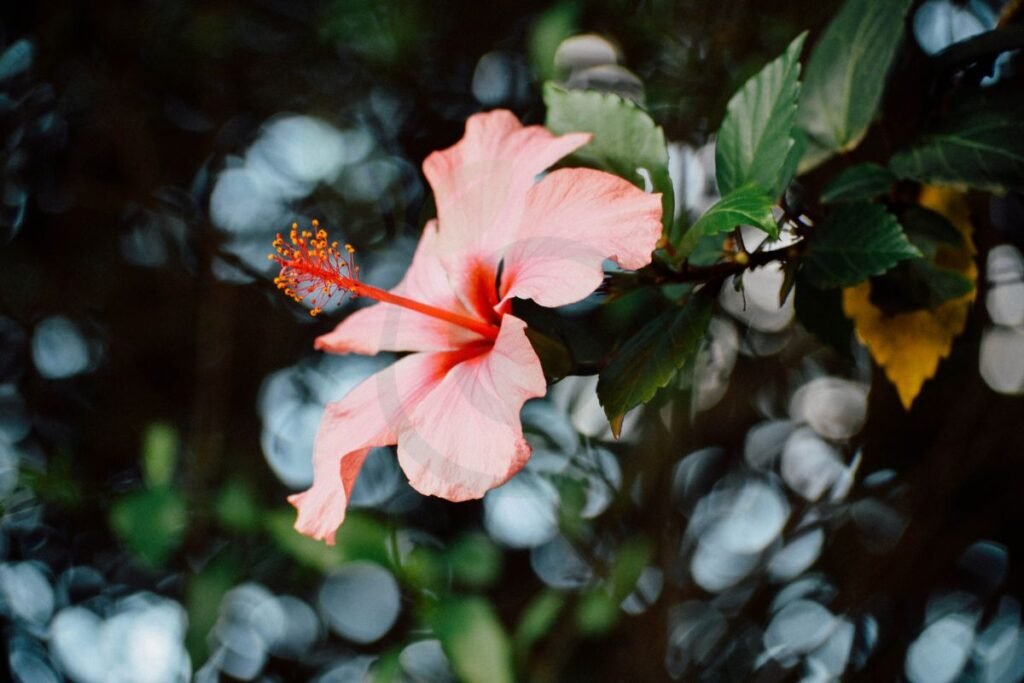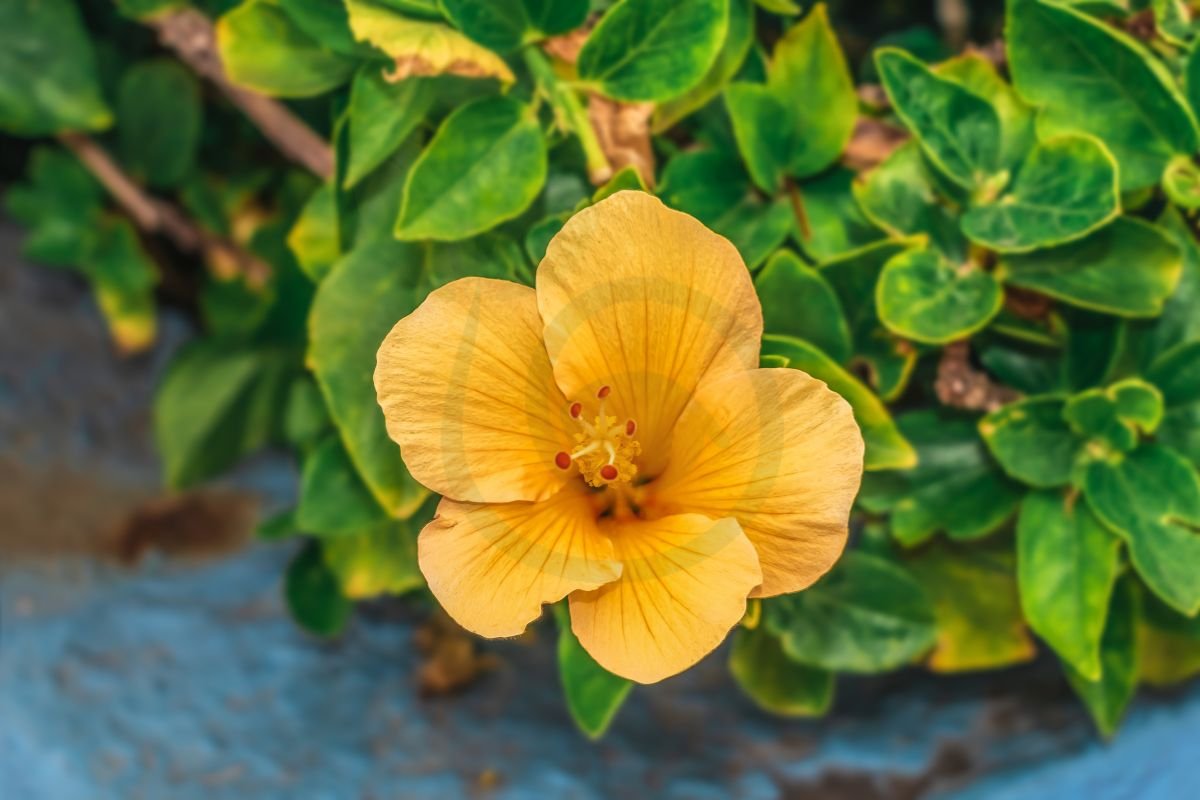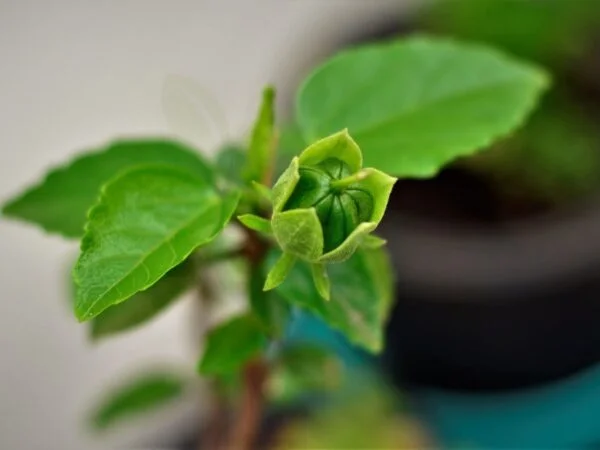Are your hibiscus plants sporting yellow leaves, leaving you puzzled about mealybugs? Wonder no more! Understanding the reasons behind this common issue can help you revive your plant's lush greenery. From nutrient deficiencies to pests and diseases, various factors can cause yellowing leaves on hibiscus plants.
Curious to unlock the secrets of restoring your hibiscus, love, to its vibrant glory? Dive deeper into our expert insights and practical tips to diagnose and treat yellowing leaves effectively. Stay tuned for valuable advice on nurturing your hibiscus back to health and ensuring a flourishing garden.
Key Takeaways
- Understand the care needs of hibiscus plants to maintain their health and vitality.
- Identify the causes of yellow leaves on hibiscus, such as overwatering, nutrient deficiencies, or pest infestations.
- Adjust watering techniques by ensuring proper drainage and avoiding waterlogged soil to prevent yellowing leaves.
- Optimize the environment for hibiscus by providing adequate sunlight and protecting them from extreme temperatures.
- Improve soil quality by using well-draining soil mixes and fertilizers tailored to hibiscus needs.
- Address insect infestations promptly to prevent damage to hibiscus plants.
Understanding Hibiscus Care
Essential Needs
Hibiscus plants require adequate water, sunlight, and temperature to thrive. Watering should be consistent but not excessive to prevent root rot. Sunlight exposure is crucial for proper growth and flowering. Maintaining the right temperature range ensures optimal health.
- Pros: Healthy hibiscus plants with vibrant blooms.
- Cons: Overwatering can lead to root rot and yellow leaves.
Balanced watering and sufficient sunlight exposure are key preventive measures against yellow leaves. Using self-watering pots can help regulate moisture levels effectively.
Preventive Measures
- Water hibiscus plants regularly but avoid overwatering.
- Ensure adequate sunlight exposure, ideally in a sunny location.
- Consider using self-watering pots for better control over moisture levels.
Seasonal adjustments play a vital role in hibiscus care. Different seasons require specific care routines to maintain plant health and prevent issues like yellow leaves.
Seasonal Adjustments
Adjust care routines based on seasonal changes:
- Spring: Increase watering frequency as temperatures rise.
- Summer: Provide shade during intense heat to prevent leaf burn.
- Fall: Reduce watering as temperatures cool down.
- Winter: Protect plants from frost by moving them indoors or providing insulation.
Identifying Yellow Leaves Causes

Watering Issues
Over-watering
- Risk of over-watering: Excessive watering can stress hibiscus roots, causing yellow leaves.
- Root system stress: Too much water can lead to root rot and hinder nutrient absorption.
- Maintaining soil moisture: Ensure proper drainage to prevent waterlogging and maintain optimal soil moisture levels.
Under-watering
- Signs of under-watering: Wilting leaves and dry soil indicate insufficient water for hibiscus plants.
- Impact on leaf health: Lack of water affects nutrient distribution, resulting in yellow leaves.
- Prevent dehydration: Water hibiscus regularly, especially during hot weather, to avoid under-watering issues.
Environmental Changes
- Effect of environmental changes: Sudden temperature shifts or exposure to drafts can cause yellowing leaves.
- Temperature impact: Extreme cold or heat stresses the plant, affecting its overall health.
- Protecting from stress: Shield hibiscus from direct drafts and extreme temperatures to maintain leaf color.
Sunlight Deficiency
- Consequences of sunlight deficiency: Inadequate light impedes photosynthesis, leading to yellow leaves.
- Impact on growth: Hibiscus requires sufficient sunlight for energy production and healthy foliage.
- Ensuring proper light exposure: Place hibiscus in a sunny spot with at least 6 hours of direct sunlight daily.
Nutrient Imbalance
- Role of nutrients in hibiscus health: Balanced nutrients are vital for vibrant foliage and overall plant well-being.
- Effects of imbalances: Lack of essential nutrients like nitrogen or iron can result in yellow leaves.
- Maintaining optimal levels: Use a balanced fertilizer and monitor soil pH to prevent nutrient deficiencies.
Watering Techniques
Correct Amount
Determining the correct amount of water for hibiscus is crucial for their health. Too much or too little water can lead to yellow leaves. Water quantity directly impacts leaf color by affecting nutrient absorption. Guidelines for watering include checking soil moisture before watering.
Establishing a consistent watering schedule ensures hibiscus plants receive adequate hydration. Regular watering routines promote healthy growth and vibrant foliage. Tips for maintaining a schedule involve monitoring soil moisture, adjusting frequency based on weather conditions, and using well-draining pots.
Schedule Consistency
Consistency in watering schedules is key to preventing yellow leaves on hibiscus plants. Regular watering helps maintain plant health and prevents stress-induced leaf discoloration. Benefits of adhering to a consistent routine include improved nutrient uptake and overall plant vitality.
Maintaining a consistent watering schedule throughout the year involves adjusting frequency based on seasonal changes. In warmer months, increase watering frequency to accommodate higher evaporation rates. During colder periods, reduce watering to prevent waterlogging and root rot.
Environmental Optimization
Ideal Location
When placing hibiscus plants, ensure they receive full sunlight for at least six hours daily. Factors like shade exposure impact leaf color. To select the best spot, consider sunlight availability and protection from strong winds.
Choose a location with well-draining soil to prevent waterlogging, which can lead to yellow leaves. Avoid planting near structures that may cast shadows on the hibiscus, affecting their growth. Ensure the area has good air circulation to prevent diseases.
Temperature Control
Maintain temperatures between 60-90°F for optimal hibiscus growth. Extreme heat or cold can cause yellowing of leaves. Protect plants from frost during winter and provide shade during scorching summers to maintain suitable temperatures.
To control temperatures effectively, consider using mulch around the base of the plant to regulate soil temperature. During colder months, cover hibiscus with cloth or bring potted plants indoors to prevent damage from low temperatures.
Humidity Levels
Monitor humidity levels around hibiscus plants to keep them healthy and vibrant. High humidity can lead to fungal diseases, impacting leaf color. Adjust humidity by providing proper ventilation or using a dehumidifier in enclosed spaces.
To maintain ideal humidity levels, avoid overwatering as it can increase moisture in the air around the plant. Prune overcrowded branches to improve air circulation and reduce humidity build-up. Consider misting the leaves occasionally in dry conditions.
Sunlight Exposure Tips
Daily Requirements
Hibiscus plants require adequate sunlight to thrive, typically needing at least six hours of direct sun exposure daily. Ensure your hibiscus is placed in an area with partial shade to prevent the leaves from turning yellow.
To maintain healthy hibiscus plants, owners should regularly check the sunlight exposure, ensuring the plant receives the right amount of light. Watering is crucial; keep the soil moist but not waterlogged.
Create a daily care routine by monitoring the sunlight levels, watering as needed, and inspecting for any signs of pests or diseases.
Seasonal Adjustments
During different seasons, adjust the hibiscus plant's location to accommodate changing sunlight patterns. In summer, provide shading during the hottest parts of the day to prevent leaf scorching.
In winter, when sunlight intensity decreases, consider moving your hibiscus plant to a spot with more direct light exposure. This seasonal adjustment ensures that your hibiscus remains healthy and vibrant throughout the year.
Soil Quality Improvement
Amending Soil
Amend soil conditions to support hibiscus growth. Good soil quality is crucial for healthy plants. Improve drainage and aeration for optimal growth.
Discuss the importance of nutrient-rich soil for plant health. Ensure proper moisture retention without waterlogging. Use organic matter like compost.
Provide tips for improving soil conditions for hibiscus. Regularly test soil pH levels. Choose well-draining soil mixes for potted hibiscus plants.
pH Balancing
Balance pH levels in the soil for optimal hibiscus growth. Soil pH affects nutrient availability to plants. Monitor and adjust pH levels accordingly.
Discuss the impact of pH on nutrient absorption by hibiscus plants. Acidic soils hinder nutrient uptake, causing yellowing leaves. Maintain a slightly acidic pH level.
Provide guidance on adjusting soil pH for hibiscus plants. Use ammonium sulfate to lower pH in alkaline soils. Apply lime to raise pH in acidic soils.
Nutrient Addition
Add nutrients to enhance hibiscus health. Essential nutrients like nitrogen, phosphorus, and potassium are vital for plant growth. Discuss the essential nutrients required for plant growth: Nitrogen promotes leafy growth, phosphorus aids in root development, and potassium supports overall plant health.
Provide recommendations for supplementing nutrients in the soil: Use balanced fertilizers with equal proportions of NPK (nitrogen, phosphorus, potassium). Consider slow-release fertilizers for consistent nutrient supply.
Addressing Insect Infestations
Common Pests
Pests like aphids and spider mites are common culprits behind yellow hibiscus leaves. These tiny insects feed on plant sap, leading to leaf discoloration. Thrips are another nuisance that can cause yellow spots on hibiscus leaves. The presence of these pests not only affects the appearance but also weakens the overall health of the plant.
To combat pest infestations, consider using a targeted pesticide. Choose a pesticide specifically formulated for hibiscus plants to ensure effectiveness without harming the plant. Regularly inspect your hibiscus for signs of pests and treat them promptly to prevent further damage. Introducing natural predators like ladybugs can help control pest populations in a more eco-friendly manner.
Natural Remedies
Opting for natural remedies offers a chemical-free solution to address yellow leaves on hibiscus. Neem oil, known for its insecticidal properties, can effectively combat common pests like aphids and spider mites. Mix a small amount of neem oil with water and apply it to the affected areas of the plant. Another natural remedy is a mixture of garlic and chili spray, which acts as a repellent against various pests while being safe for the environment.
By utilizing natural remedies, you not only protect your hibiscus from harmful chemicals but also promote a healthier ecosystem in your garden. These homemade solutions are cost-effective and easy to prepare, making them an accessible option for plant enthusiasts seeking sustainable care practices.
Preventive Care
Preventive care plays a crucial role in maintaining vibrant, green hibiscus leaves throughout the year. Regularly inspect your plants for any signs of pest activity or nutrient deficiencies. Pruning dead or damaged branches helps improve air circulation around the plant, reducing the risk of pest infestations.
Incorporate organic matter into the soil to enhance its quality and provide essential nutrients to your hibiscus plants. Mulching around the base of the plant helps retain moisture and suppress weed growth, creating an optimal environment for healthy growth. By implementing these preventive measures consistently, you can safeguard your hibiscus from common issues that lead to yellowing leaves.
Preventive Strategies
Regular Monitoring
Regularly monitor hibiscus plants for signs of stress. Observing plant health is crucial to catch issues early. Look for yellow leaves, pests, or wilting.
Proactive Treatments
Take proactive treatments to prevent yellow leaves on hibiscus. Early intervention in plant care has significant benefits. Address potential issues promptly to maintain plant health.
Community Advice
Seek advice from the community for hibiscus care tips. Sharing experiences with other gardeners can provide valuable insights. Connect with gardening communities for additional resources and support.
Advanced Hibiscus Care Techniques
Pruning Practices
Proper pruning techniques are essential for maintaining hibiscus health and promoting optimal growth. Regular pruning helps remove dead or diseased branches, allowing the plant to focus its energy on new growth. It also enhances air circulation, reducing the risk of diseases.
When pruning hibiscus plants, make sure to use sharp and clean tools to prevent damage and infections. Trim back overgrown branches to encourage bushier growth and more vibrant blooms. Aim to prune after the flowering season ends to avoid cutting off potential flower buds.
- Benefits of regular pruning:
- Stimulates new growth
- Improves overall plant appearance
- Enhances flower production
Fertilization Schedule
Establishing a consistent fertilization schedule is crucial for ensuring the proper nutrition of hibiscus plants. Balancing the nutrients through fertilization supports healthy foliage, robust root development, and abundant flowering. Consider using a well-balanced fertilizer with equal parts nitrogen, phosphorus, and potassium.
When fertilizing hibiscus, apply the fertilizer according to the manufacturer's instructions. During the growing season, feed the plants every two to four weeks with a diluted solution. In winter or dormant periods, reduce fertilization frequency to once a month or less.
- Importance of balanced fertilization:
- Promotes healthy growth
- Enhances flower color and size
- Supports overall plant vigor
Repotting Guidelines
Following proper repotting guidelines is vital for maintaining hibiscus plant health and vitality. Repotting allows for refreshing the soil mix, providing more space for root growth, and preventing root-bound conditions. It is recommended to repot hibiscus plants every one to two years or when they outgrow their current containers.
Before repotting, carefully inspect the roots for any signs of disease or rot. Choose a slightly larger pot with good drainage holes and fill it with fresh potting mix suitable for hibiscus plants. Gently loosen the roots before placing the plant in its new container and watering thoroughly.
- Reasons for repotting:
- Refreshes soil nutrients
- Prevents root overcrowding
- Encourages healthy root development
Closing Thoughts
After mastering hibiscus care essentials and learning to identify the causes of yellow leaves, you're now equipped with the knowledge to optimize your plant's environment. By implementing proper watering techniques, ensuring adequate sunlight exposure, improving soil quality, addressing insect infestations promptly, and utilizing advanced care strategies, you can enhance the health and vibrancy of your hibiscus. Remember that preventive measures are key to maintaining a thriving plant.
Take action today by applying these tips to your hibiscus care routine. Share your newfound knowledge with other plant enthusiasts to help them nurture their hibiscus successfully. Your dedication and attention to detail will result in lush green foliage and vibrant blooms for your hibiscus plants.
Frequently Asked Questions
What are the common causes of yellow leaves on hibiscus plants?
Yellow leaves on hibiscus can be caused by overwatering, nutrient deficiencies, pests, diseases, or environmental stress. Ensure proper watering, adequate nutrients, and monitor for pests regularly.
How can I improve the soil quality for my hibiscus plants?
To improve soil quality for hibiscus, use well-draining soil mixtures rich in organic matter. Consider adding compost or mulch to enhance soil structure and fertility.
What are some preventive strategies to keep hibiscus leaves healthy?
Prevent yellow leaves by maintaining good airflow around plants, avoiding over-fertilization, inspecting for pests regularly, and providing optimal growing conditions including proper sunlight exposure and watering.
Should I adjust sunlight exposure to prevent yellow leaves on my hibiscus?
Yes, ensure your hibiscus receives adequate sunlight but avoid excessive exposure that can lead to leaf burn. Monitor your plant's response to light levels and adjust accordingly.
How do I address insect infestations causing yellow leaves on my hibiscus?
Identify the specific pest affecting your hibiscus and choose an appropriate treatment method such as insecticidal soap or neem oil. Regularly inspect your plants to catch infestations early.
Image Source: Paid image from CANVA



